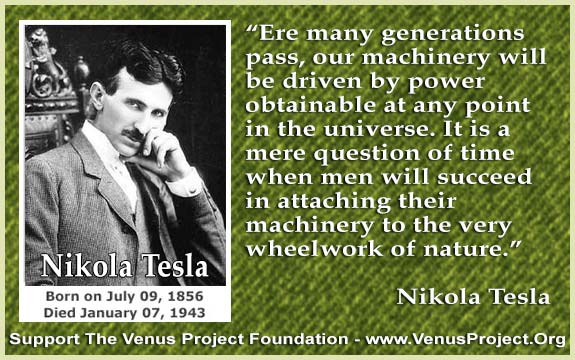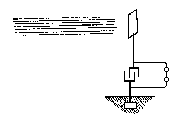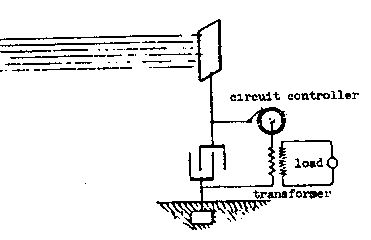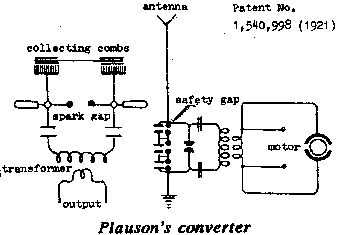Nikola Tesla - Free Energy Receiver
Top 10 Greatest Inventions by Nikola Tesla
The Lost Inventions of Nikola Tesla
- By George Trinkaus
 For starters, think of this as a solar-electric panel. Tesla's invention is very different, but the closest thing to it in conventional technology is in photo-voltaics. One radical difference is that conventional solar-electric panels consist of a substrate coated with crystalline silicon; the latest use amorphous silicon. Conventional solar panels are expensive, and, whatever the coating, they are manufactured by esoteric processes.
For starters, think of this as a solar-electric panel. Tesla's invention is very different, but the closest thing to it in conventional technology is in photo-voltaics. One radical difference is that conventional solar-electric panels consist of a substrate coated with crystalline silicon; the latest use amorphous silicon. Conventional solar panels are expensive, and, whatever the coating, they are manufactured by esoteric processes.
But Tesla's "solar panel" is just a shiny metal plate with a transparent coating of some insulating material which today could be a spray plastic. Stick one of these antenna-like panels up in the air, the higher the better, and wire it to one side of a capacitor, the other going to a good earth ground. Now the energy from the sun is charging that capacitor.
Connect across the capacitor some sort of switching device so that it can be discharged at rhythmic intervals, and you have an electric output. Tesla´s patent is telling us that it is that simple to get electric energy. The bigger the area of the insulated plate, the more energy you get. But this is more than a 'solar panel' because it does not necessarily need sunshine to operate. It also produces power at night.
Of course, this is impossible according to official science. For this reason, you could not get a patent on such an invention today. Many an inventor has learned this the hard way. Tesla had his problems with the patent examiners, but today's free-energy inventor has it much tougher. At the time of this writing, the U. S. Patent Office is headed by a Reagan appointee who came to the office straight from a top executive position with Phillips Petroleum.
 Tesla's free-energy receiver was patented in 1901 as An Apparatus for the Utilization of Radiant Energy. The patent refers to "the Sun, as well as other sources of radiant energy, like cosmic rays." That the device works at night is explained in terms of the night-time availability of cosmic rays. Tesla also refers to the ground as "a vast reservoir of negative electricity."
Tesla's free-energy receiver was patented in 1901 as An Apparatus for the Utilization of Radiant Energy. The patent refers to "the Sun, as well as other sources of radiant energy, like cosmic rays." That the device works at night is explained in terms of the night-time availability of cosmic rays. Tesla also refers to the ground as "a vast reservoir of negative electricity."
Tesla was fascinated by radiant energy and its free-energy possibilities. He called the Crooke's radiometer (a device which has vanes that spin in a vacuum when exposed to radiant energy) "a beautiful invention." He believed that it would become possible to harness energy directly by "connecting to the very wheelwork of nature." His free-energy receiver is as close as he ever came to such a device in his patented work.
But, on his 76th birthday, at the ritual press conference, Tesla (who was without the financial wherewithal to patent but went on inventing in his head) announced a "cosmic-ray motor." When asked if it was more powerful than the Crooke's radiometer, he answered, "thousands of times more powerful."
How it works
From the electric Potential that exists between the elevated plate (plus) and the ground (minus), energy builds in the capacitor, and, after "a suitable time interval," the accumulated energy will "manifest itself in a powerful discharge" which can do work. The capacitor, says Tesla, should be "of considerable electrostatic capacity," and its dielectric made of "the best quality mica,' for it has to withstand potentials that could rupture a weaker dielectric.
Tesla gives various options for the switching device. One is a rotary switch that resembles a Tesla circuit controller. Another is an electrostatic device consisting of two very light, membranous conductors suspended in a vacuum. These sense the energy build-up in the capacitor, one going positive, the other negative, and, at a certain charge level, are attracted, touch, and thus fire the capacitor. Tesla also mentions another switching device consisting of a minute air gap or weak dielectric film which breaks down suddenly when a certain potential is reached.
The above is about all the technical detail you get in the patent. Although I've seen a few cursory references to Tesla's invention in my sampling of the literature of free-energy, I am not aware of any attempts to verify it experimentally.
Plauson's converter - How it works



